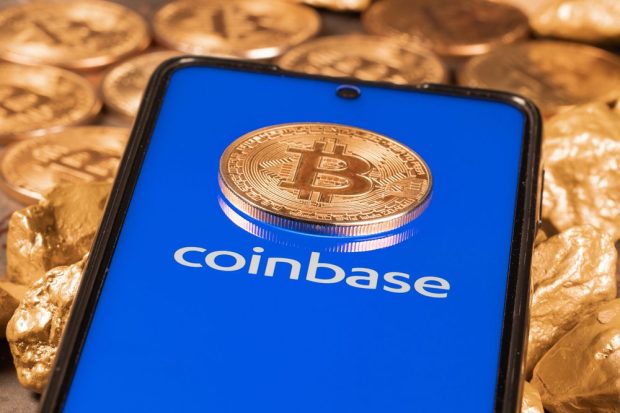Coinbase Feels Heat as Business Model Cracks under Strain

Coinbase’s share price tumbled as the Nasdaq-listed cryptocurrency exchange’s core business model was challenged on two sides: by Wells Fargo, which gave it what amounts to a sell rating, and by famed short-seller Jim Chanos, who called it emblematic of the “predatory junkyard that is crypto.”
Harsh words. But the top U.S. crypto exchange had few positive reviews lately. It laid off 18% of its staff and slashed spending in the wake of plummeting crypto winter revenue, share price tanked, dropping more than 10% to $60 briefly — well down from its November high of almost $369.
See also: Coinbase Upbeat Despite $1.1B Loss, as Shares Sink 10%
Wells Fargo hit Coinbase — which was recently downgraded to “neutral” by Goldman Sachs — with an “underweight” rating, citing growing global competition that will hurt its market share and lower retail fees, CoinDesk said.
That played into criticism by Chanos, who started with Coinbase’s “really excessive commissions” of 2.5% to 2.6% and added that if retail customers “do four trades a year, it’s 10%. That’s a big hit.”
He also cited extremely high overhead, saying that if its expenses are “representative of sort of the broad crypto infrastructure, that means that the crypto universe is probably running expenses of $50 to $60 billion a year on a $1 trillion” market capitalization.
“This is a really high-cost industry that needs lots of activity and really high commission rates to make money,” Chanos said of the broader crypto business. “I think that if you’re losing money now doing that, charging retail customers 2.5% … it’s not a good business model.”
Innovation
Which is what PYMNTS’ Karen Webster said last April, when Coinbase first went public.
Read more: Is Coinbase Netscape 2.0? Here Are Five Things You Must Believe
Riffing off of a Financial Times story comparing Coinbase to the famous (or infamous) 1994 IPO of revolutionary web browser Netscape, Webster said there are five things you must believe if Coinbase really is another Netscape, whose technology changed the world — but notably didn’t save the company itself.
Taking them one at a time, Webster said that the first is that you must believe that Coinbase “is a path-breaking innovation that will unlock huge value.”
Given yet another hit to its share price, the second part is very hard to argue after plummeting crypto prices from the crypto winter knocked nearly three-quarters off bitcoin’s price.
As for innovation, as Chanos pointed out, plenty of competitors are offering the same service — and many for far less. But it’s worth noting that one of Coinbase’s main strength as an exchange has been a very customer-friendly app, regulatory compliance that is no longer so unique, and strong custodial security and insurance, for which the same applies. And strong new arms of competitors like Binance.US and FTX US — whose global business far exceeds Coinbase’s — have entered the market.
See more: Struggling Coinbase Pivots to Subscriptions
One of its biggest revenue generators, as J.P. Morgan analysts said in a Sept. 16 client note, is interest. It could see as much as $1.2 billion in revenue next year from interest as rising rates increase its income from customers and its own cash holdings, and from its share of the USD Coin stablecoin’s backing reserve of currency and short-term Treasuries that it shares with co-issuer Circle.
Read also: Today in Crypto: Coinbase Could Earn $1.2B From Higher Interest, Analyst Says
Second was that “Coinbase will ignite the crypto industry.” It’s very hard to give CEO Brian Armstrong all the credit for the crypto-wide bull market that ran bitcoin to nearly $70,000 late last year, and saw the market cap of crypto rise to $3 trillion (now $1 trillion).
That said, PYMNTS U.S. Crypto Consumer study showed that the market itself had ignited, with about 23% of consumers having held crypto in the 12 months before the April study — up from 16% a year earlier.
Currency
Third was that crypto must become a transacting cryptocurrency, not a speculative asset.
While use is growing and many of the top payments processors have embraced support of digital assets this year, they are increasingly focused on stablecoins — which can fairly be said to have changed the world, as can be seen by the more than 100 countries at least considering central bank digital currencies, which were in large part a response to stablecoins. And, where other cryptocurrencies may be changing the world is in the use of smart contracts for everything to supply chain management to programmable money — not how it is traded by speculators.
As for crypto’s use as a currency, while usage is growing, it’s still miniscule. Where it has really taken hold is in countries like Argentina, where the fiat currency is collapsing under hyperinflation.
Fourth was that regulator embrace crypto rather than strangle it. The jury’s still out on that one, but at least a partial embrace is looking more likely.
Five was that it had to have a sustainable business model. As Chanos said, requiring excessively high commission and counting on price volatility to boost trading isn’t very sustainable.
